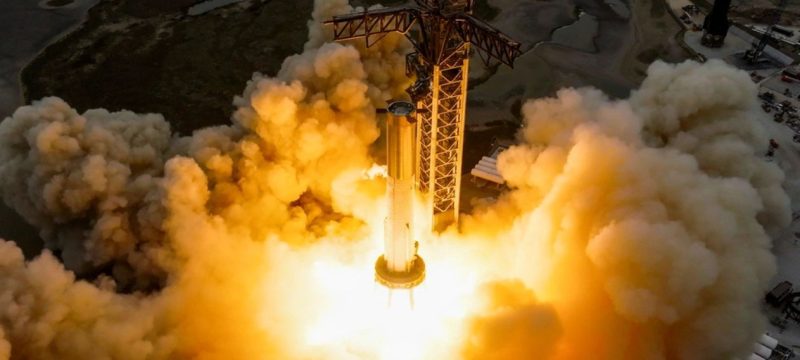SpaceX’s ninth test flight of its massive Starship rocket ended unsuccessfully on Wednesday after the vehicle lost control and broke apart about 30 minutes into its uncrewed mission, according to US media reports.
The rocket, developed by Elon Musk’s aerospace company SpaceX, was launched from their test site in Boca Chica, Texas. Reuters reported that a fuel leak occurred while the spacecraft was in orbit, causing it to spin out of control before re-entering Earth’s atmosphere and disintegrating prematurely.
Read more: Space-Evolved Bacteria Raises Alarm for Future Missions
SpaceX confirmed the incident on social media, describing it as a “rapid unscheduled disassembly,” their term for an unplanned explosion or breakup during flight.
“Success in tests like this comes from what we learn,” SpaceX said. “Today’s flight will help us enhance Starship’s reliability as we work towards making life multiplanetary.”
Before losing control, the 123-meter-tall rocket had achieved a higher altitude than in previous tests, showing progress in the company’s goal to create a reusable spacecraft capable of carrying humans and cargo to the Moon and Mars.
This was Starship’s ninth integrated flight atop its Super Heavy booster. Of the previous eight, four ended in destruction, with the latest failure before this occurring on March 6, when the rocket exploded shortly after launch.
SpaceX’s testing approach, which embraces frequent failures as part of rapid learning, is central to Elon Musk’s vision of colonizing Mars. However, the repeated crashes have raised concerns about environmental damage and public safety, especially since debris has fallen across southern US states and parts of the Caribbean multiple times.
Following Wednesday’s failure, the US Federal Aviation Administration (FAA) temporarily suspended departures at four major Florida airports, including Miami International Airport, due to reports of falling debris in the region.
The FAA also expanded the airspace closure zone for the flight to nearly 1,600 nautical miles (2,963 km) east of the Texas launch site, coordinating with aviation authorities in the UK, Mexico, Cuba, the Bahamas, and the Turks and Caicos Islands.
Despite these risks, the FAA recently approved increasing SpaceX’s annual launch limit from five to 25, concluding the higher frequency wouldn’t significantly harm the environment. This decision faced opposition from conservation groups.
SpaceX’s growing relationship with the US government has sparked concerns over potential conflicts of interest. In March, the Campaign Legal Center filed an ethics complaint urging an investigation into whether FAA’s dealings with Musk’s Starlink violated conflict-of-interest rules.
Elon Musk, who has become increasingly involved in US politics and supported former President Donald Trump, insists his focus is on eliminating “hundreds of millions of dollars of fraud and abuse” in federal programs.
Meanwhile, SpaceX is collaborating with NASA on upcoming crewed lunar missions as part of the Artemis program. If successful, Starship would become the most powerful launch vehicle ever created, able to carry more payload to orbit than any rocket in history.









